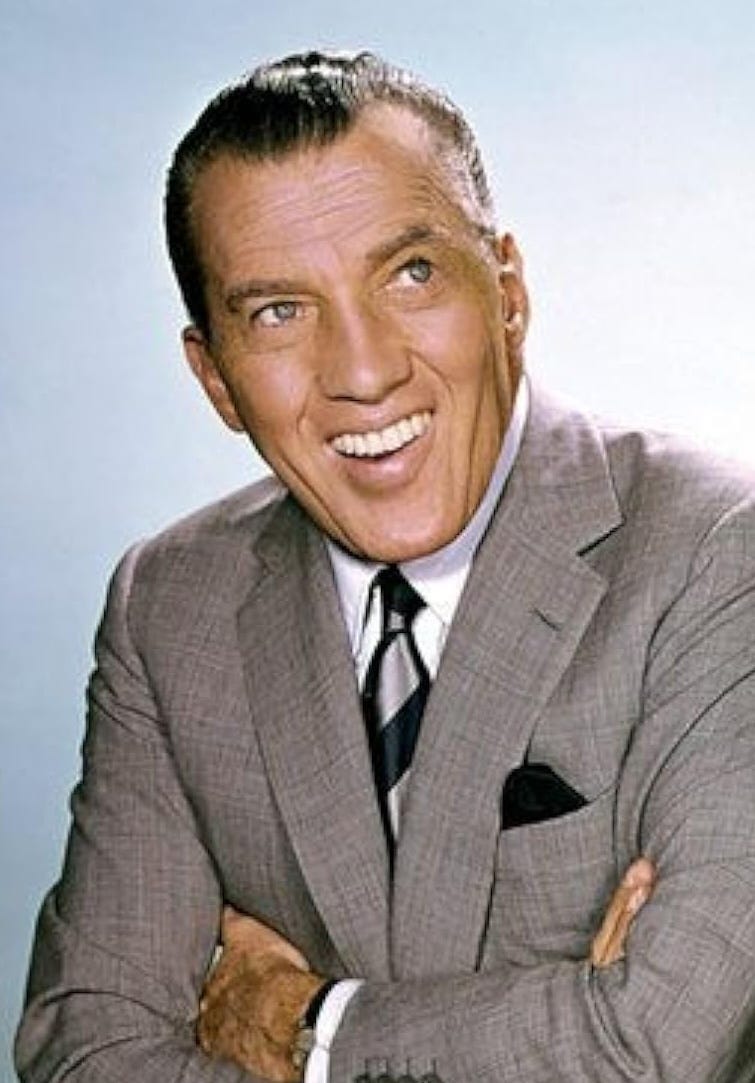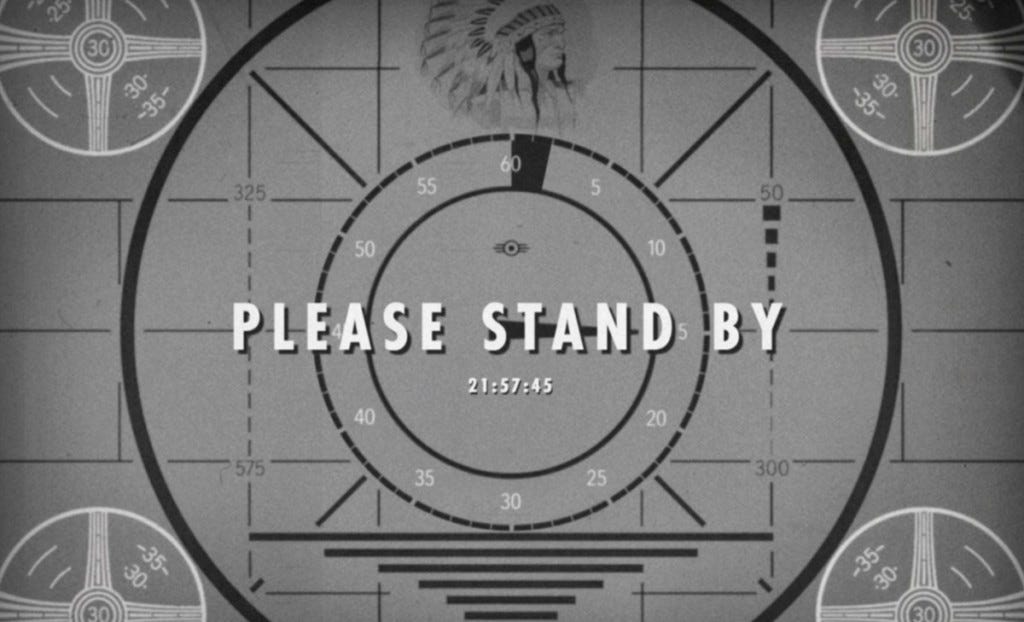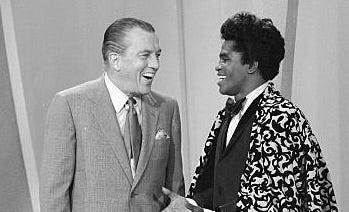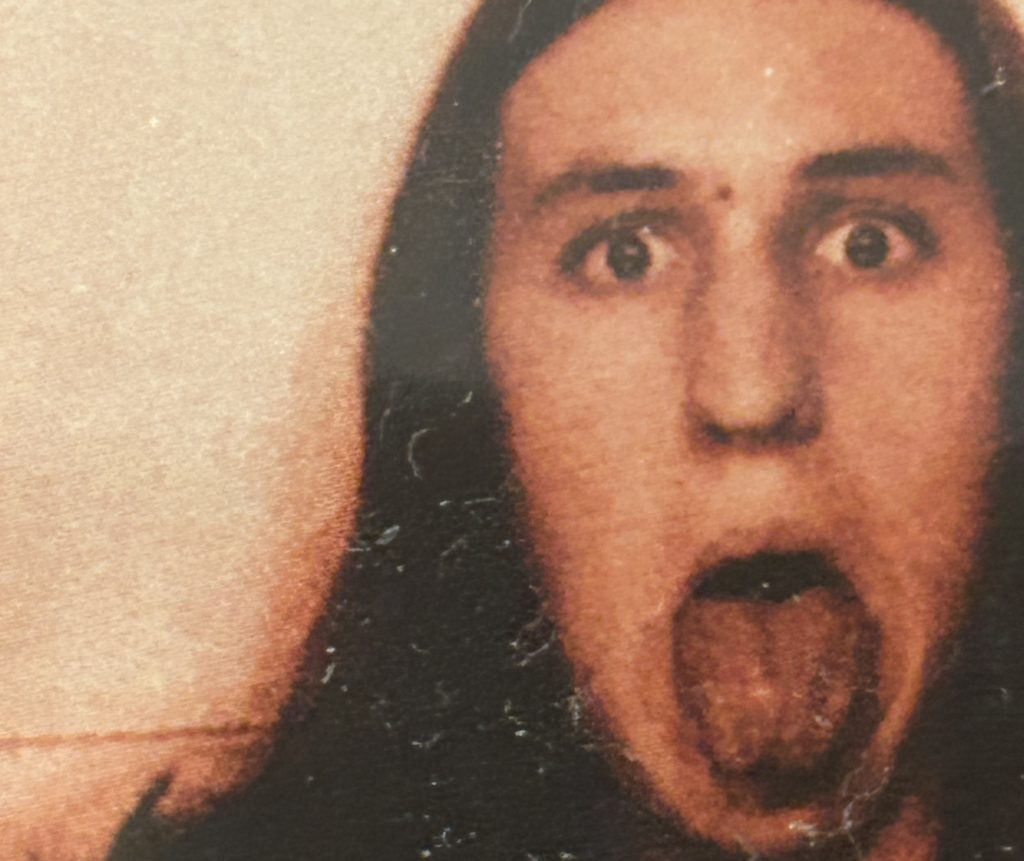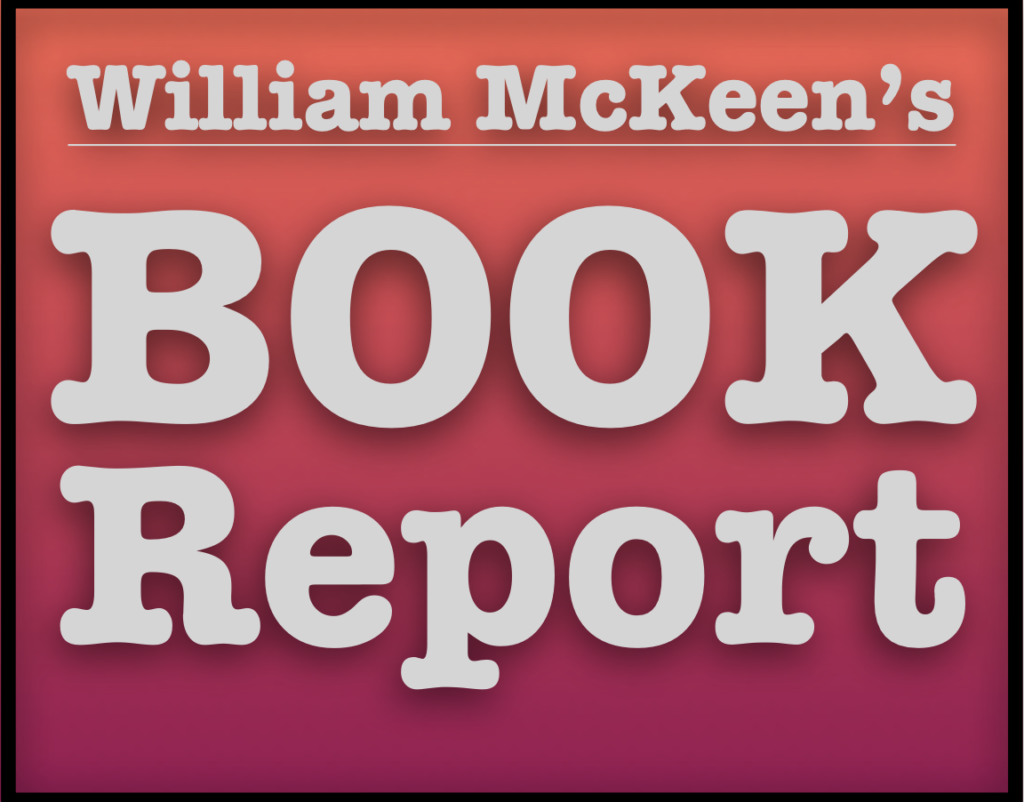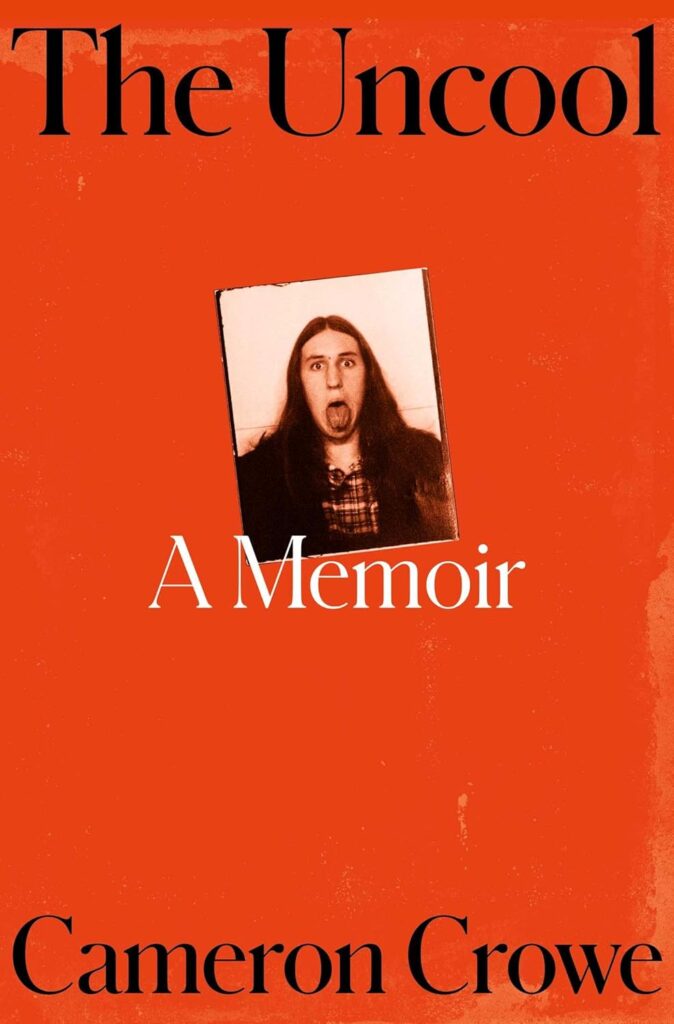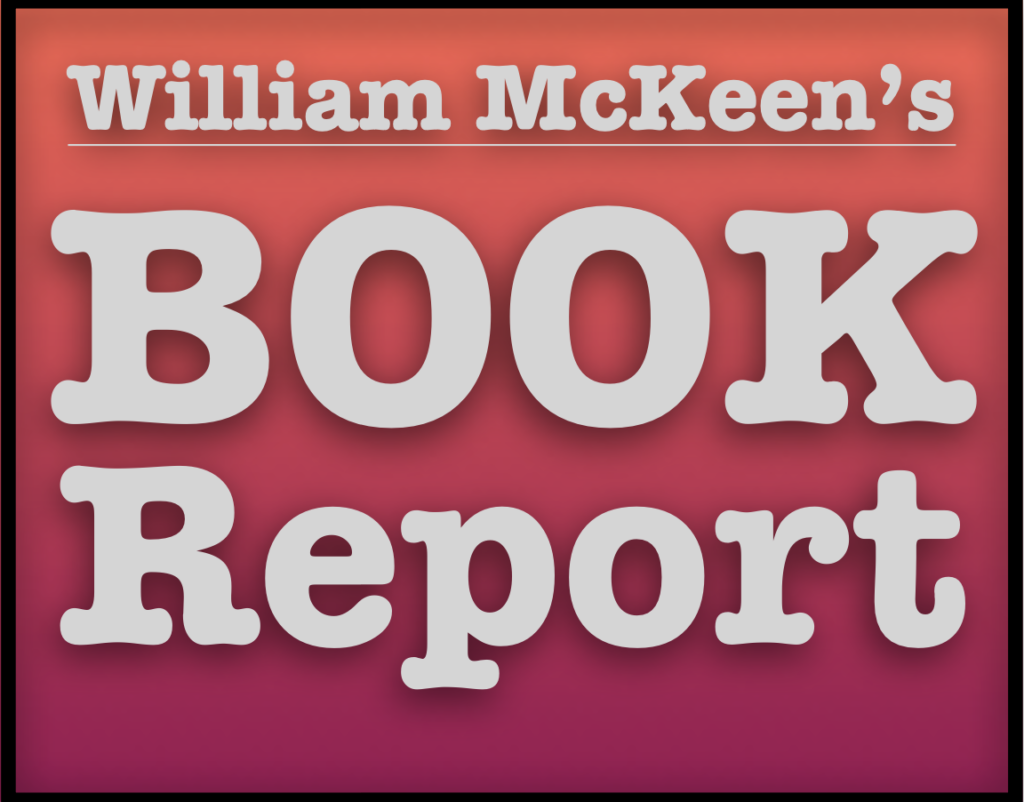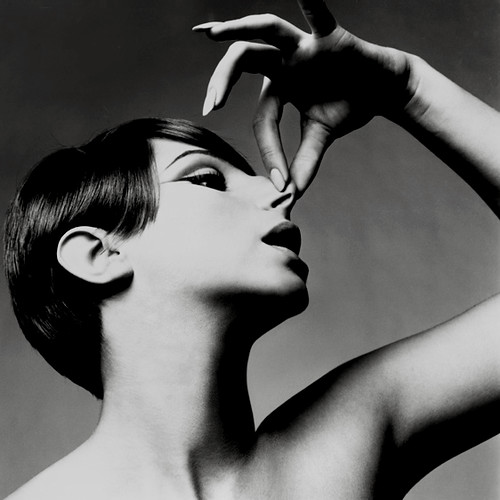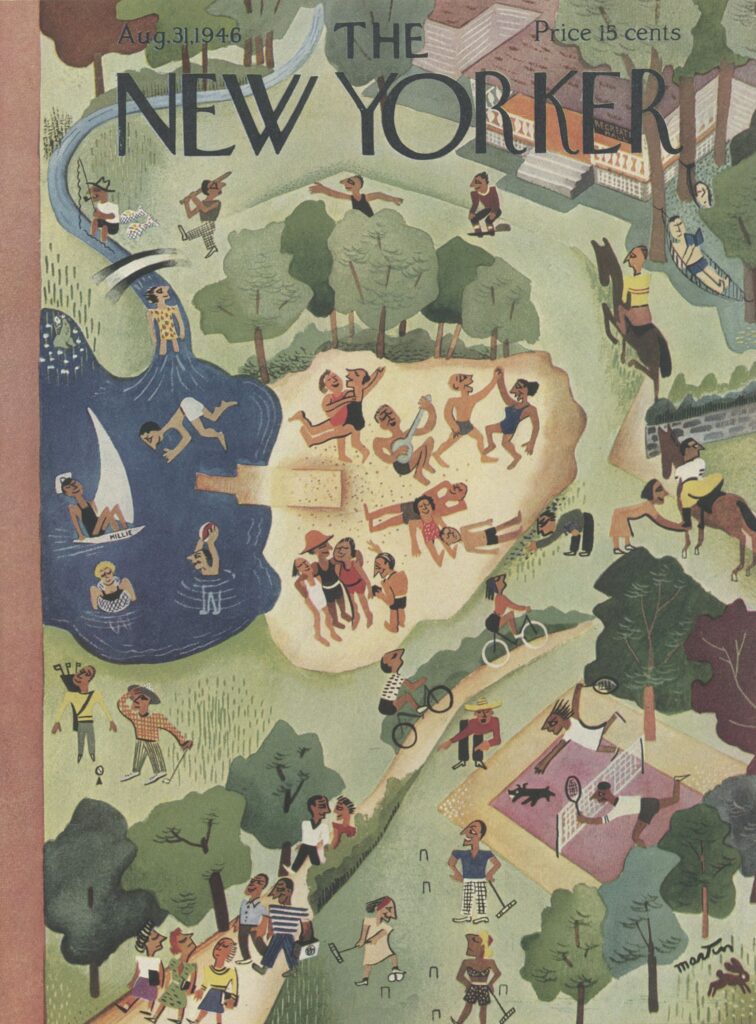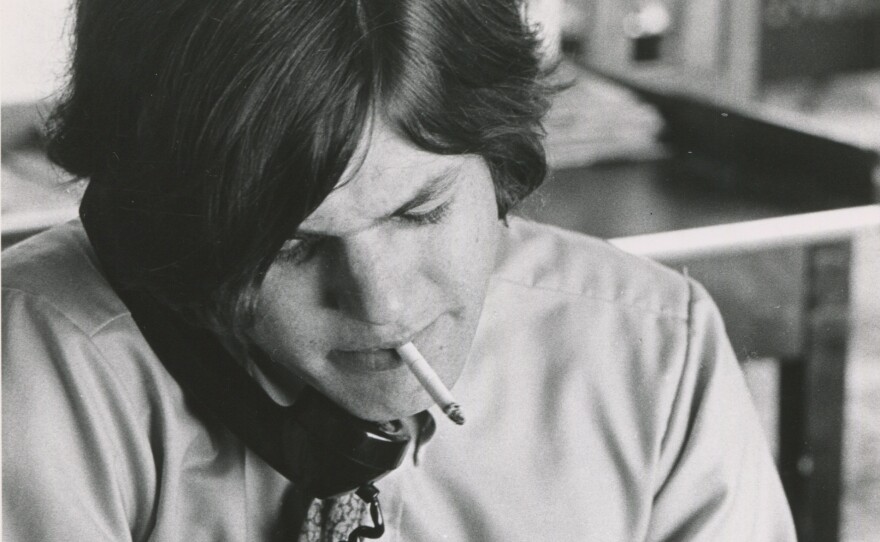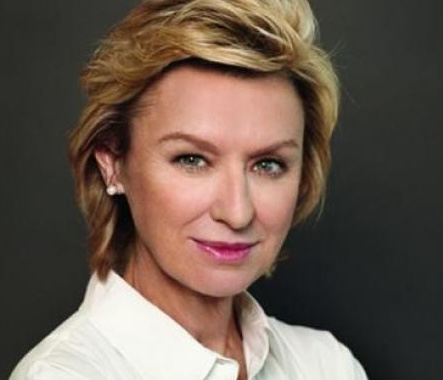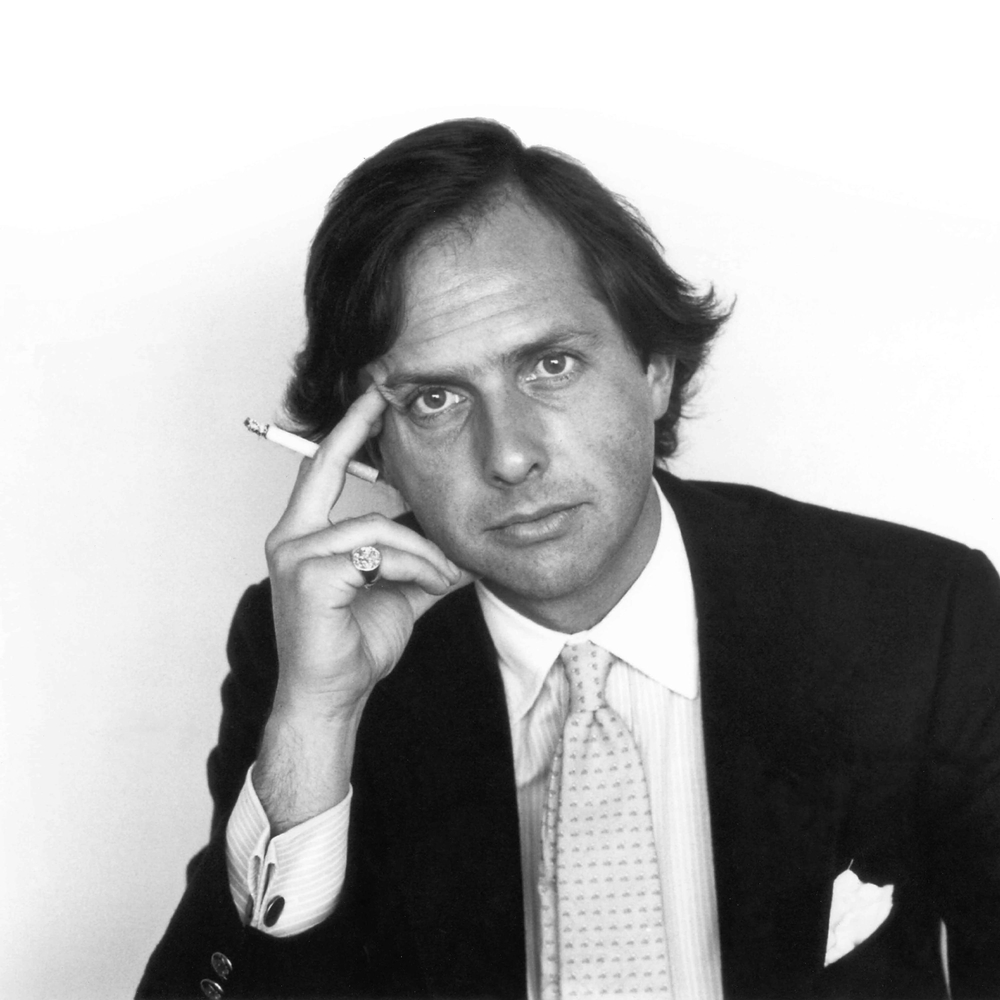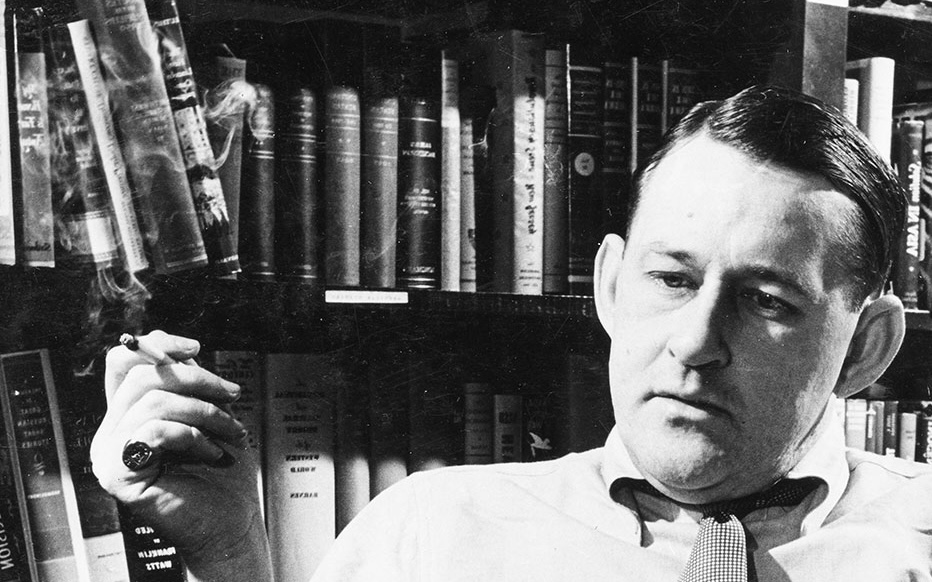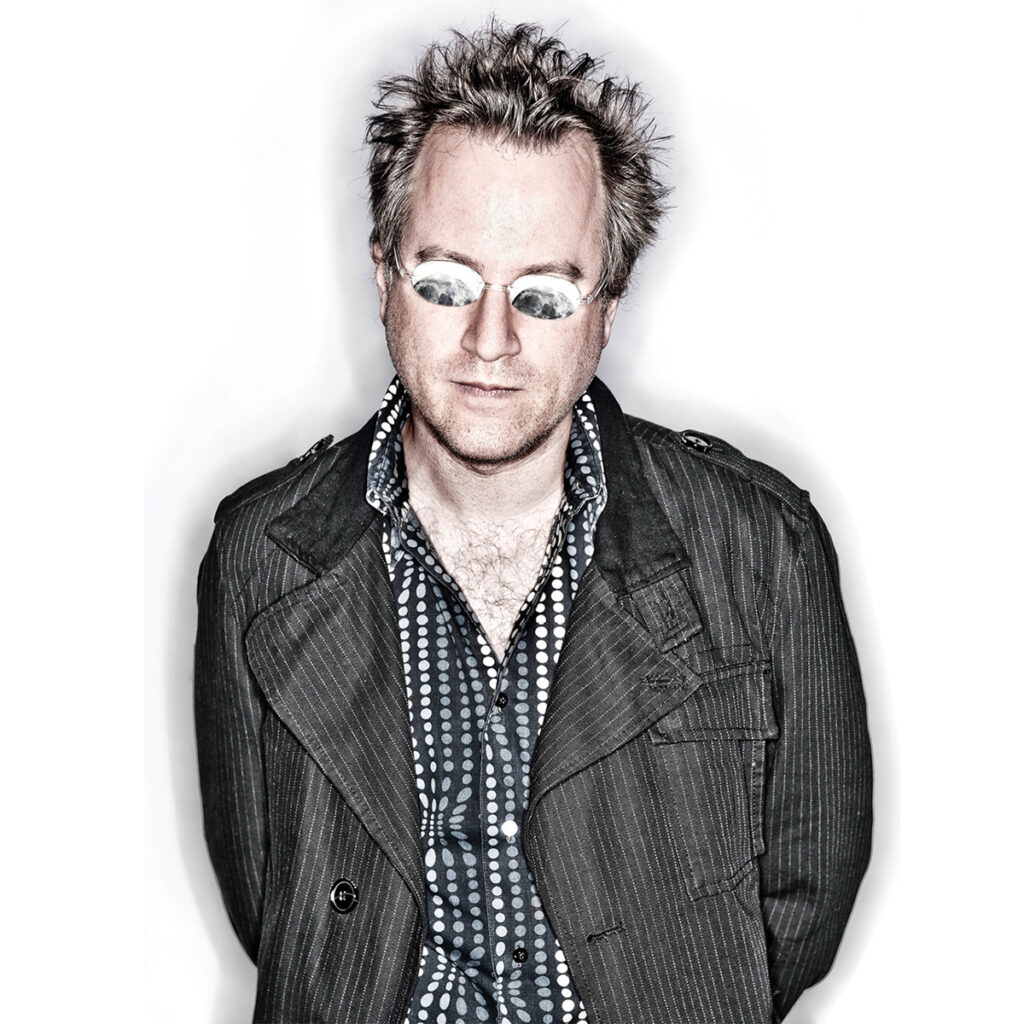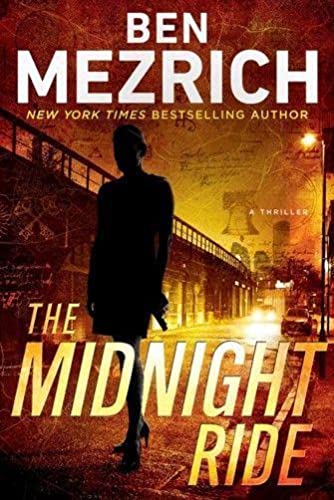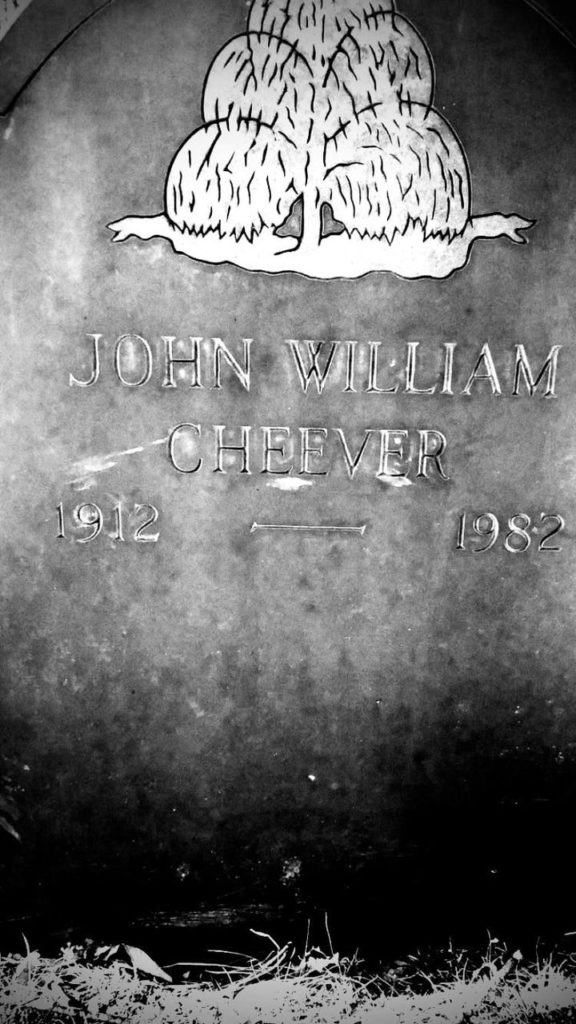I don’t think this story will ever end — at least not until I end.
Not until I …. shuffle off the mortal coil . . . get deleted . . . eat weeds by the roots . . . get carried away by angels . . . become a null parrot . . . bid adieu to Earthy scenes . . . change a fleeting world to an immortal rest . . . depart from this in hope of a better life . . . take the big sleep . . . cancel my subscription.
And those are just a few euphemisms for death. (When I was writing Everybody Had an Ocean, which is about rock’n’roll stars in the 1960s, I knew there’d be a lot of fucking in the book. To avoid overuse of the Fuck Word, I wanted euphemisms for the act. My pal Sarah Kess helped me put together a list of more than a hundred such, and that list was so much more fun than this death list. My favorite was “crashing the custard truck.”)
I could go to my eternal reward later this afternoon. Or I might stick around for thirty more years. Of my parents and grandparents, four out of six made it deep into their nineties.
You never know.
So, back to the point: where and when does this end?
How about here? This may be a good stopping point.
(Click for “The End” by the Doors.)
I still have neuropathy. The primary medication for this is Gabapentin. I take the maximum amount, but the neuropathy does not go away. If I stop taking those pills, the pain is significantly worse.
So I keep taking Gabapentin because it lessens the pain.
What helps more is the mushroom supplement I put in my coffee, and cannabis, whether in tincture form in coffee, or gummies. I dislike smoking, but will burn one down in a pinch.
Cannabis gummies give me terrific sleep. When I catheterize before bedtime and take a gummy, I sleep through the night. I’m not sure I’ve done that regularly since my footie-pajama days.
Without gummies and / or Gabapentin, the neuropathy is sometimes so bad that it wakes me. If I’m having an onset before hitting the sack, it can keep me up for hours.
I describe this neuropathy sensation as if “I’m walking on your feet.”
I never know where my feet are going to go. I have no control.
I warn students about my neuropathy at the beginning of each semester. I feel they deserve a warning and to not think I’m just lazy. I tell them I may sit down, which is something they’re probably not used to in large lecture classes. But standing too long, with the neuropathy, feels like dancing on nails.
I also warn them that I walk like a drunk, but that I’m not drunk. Again, I’m never sure where my feet are going next.
This can’t be helped.
(For the record, I don’t drink much anymore. I have maybe 3-4 beers a month, perhaps the most startling thing my friends note about my health issues of the last few years.)
This all started due to ass cancer. So perhaps you wonder about the state of my ass.
It’s fine; thank you for asking.
It’s not a perfect ass, but after what it’s been through, a little gastric eccentricity now and then is to be expected.
I think back on my former gastric horror shows and think of those events as masterpieces of CGI. That couldn’t have really happened, could it? No body could produce that much foul waste, could it? Those scenes had to be special effects, right?
I still have problems with the southerly orafice now and then. Fortunately, none of these incidents have turned into a public spectacle, like the train station incident years ago. Knocketh thee on wood, please.
When I go someplace new, I immediately locate the restroom for possible emergency use. I never go anywhere without crafting a contigency plan. I have changes of clothes in my car and in my office. At work I store these emergency clothes, along with old research papers, in my refrigerator. Not sure why I do that, but I do.
This fecal fear means I limit my activities sometime and pass up doing things a normal-assed person might want to do — things that an abnormally-assed person like me might fear to do.
But I have to put my ass first if I want to avoid disaster.
That’s the way it is, as Walter Cronkite used to say.
I am this way because I wanted to stay alive. This is the price I pay, so I accept it.
Every couple of weeks I fall. These falls happen at the strangest times. The most recent one, last Sunday, came after I walked into my house. I didn’t trip on a cat toy or hook my shoe on the threshhold.
I just fuckin’ fell.
One or two of my boys have been with me when these falls happen. It’s still kind of freaky to us all. It’s only happened a few times in a public place. Usually, it’s inside the house or in the driveway.
It’s astonishing that these little dudes, whose diapers it seems I was changing just two days ago, have turned into big, hulking men, helping their father to stand.
Life, it is short.
Jackson thinks my falls are related to dehydration. I’m not sure. I should drink much more water than I do — he’s right about that. But more water means more pee and that introduces other sorts of issues.
In addition to “my urologist,” I have “my neurologist.” The falls could be related to something in my melon, but so far no evidence of that.
You heard right. I’ve added a neurologist and an allergist to my Rolodex of medical professionals.
Here’s why:
In addition to the falling, I started getting the shakes. I couldn’t open jars or even the boys’ juice packets. I could not write by hand.
A couple of times my right hand shook so hard in lecture that I held it behind my back so my students wouldn’t see.
On top of the shakes, I began to have memory issues.
I was being interviewed for a Bob Dylan podcast a few years back when, right in the middle of analyzing one of his songs, the floor fell out from under me.
I could not think of the next word I planned to say. I could say other words.
I told the host, “I don’t know what’s happening.” Also: “This is really embarrassing.” Lots of silence coming from me.
The host, Rockin’ Rob Kelly of Pod Dylan, tried to coax me through. “Just take your time,” he said. “Relax.”
He got me through it. This emptiness lasted a full minute — absolutely no idea how to continue my thought.
Eventually words came back to me and we finished the interview. Rob edited my brain malfunction from the recording and when I listened to it — which I did, because I wanted to know if I sounded weirder after “the incident” — it sounded great. I made sense as I analyzed one of my favorite weird basement-tape Dylan songs, “Clothes Line Saga.”
As I listened to the podcast, I couldn’t tell when my brain left the room. I sounded somewhat lucid, considering it was me.
But that scared me.
Then the same thing happened in class, and that was terrifying.
I jabber for a living. Talking is what I do. And in one school year, I had an incident in the fall semester, then an incident in the spring semester. In both cases, it happened in a lecture: my non-stop yapping suddenly stopped.
Both of these incidents happened in my History and Principles of Journalism class, a large lecture, with usually between eighty and a hundred students.
Neither brain malfunction lasted as long as the podcast incident. Maybe thirty seconds, though it could have been shorter. Maybe the students mistook it for a dramatic pause, not realizing the panic inside my skull. When your brain decides to hop a psychic freight, you’re unable to correctly judge the passage of time.
Those incidents worried me and I asked Sofia Chu, my primary-care physician, if she would recommend a neurologist, and she did.
I spent a summer shuttling to different members of a neurology practice. The first session had some testing. The second session was long — four hours of testing and being interviewed. We also played some memory games.
I have to admit: the tests were exhausting. I was mostly embarrassed by my issues with short-term memory.
My mother had Parkinson’s. My sister has Parkinson’s, as do several friends. I feared that was my problem, but after some initial concern, turns out I don’t yet have it. I have a “slight cognitive malfunction,” which, my neurologist assures me, everyone gets at my age.
To this, I offer a big whew.
However, it’s given the boys ammunition.
“Damn,” I say, coming home from he grocery. “I forgot to get detergent.”
“Are you having another slight cognitive malfunction, Dad?”
It’s Charley who likes to tease me. I ask for help with some task — folding laundry, for example — and when the job doesn’t get done in sufficient time, I take issue.
“Are you going to fold this laundry or are you going to make your poor ol’ cancerous dad do it?”
“You’re cured,” Charley says. “Your cancer is gone and your ass is fixed.”
Then he goes ahead and folds the laundry.
My pain migrates. One day my left forearm hurts to all hell, then the next day it’s my right shoulder and the next day my left knee.
I can’t figure that out.
About two years ago, I began having rashes and these too migrated. My left arm would be clear, but the right arm looks like the lunar surface.
One day, I have a huge bump at my temple. Looks like I’ve been in a prize fight. The next day I wake up and the painful bump is on my lips, which are swollen and look like boiled frankfurters.
I went to see a dermatologist and before he could take a look at my regular skin eruption, he was digging a chunk out of my arm. I had to come back two weeks later so he could get more of my arm for a second biopsy.
The thing probably would turn into skin cancer, he said, but he caught it in time.
He put me on a course of medication and sent me to an allergist. The allergist couldn’t figure out what it was that I was allergic to, but she gave me long-term medicine that keeps the skin eruptions at bay.
So long, hot-dog lips.
Jackson serves as my health-and-wellness conscience. He has lived with me full-time for about six years. I tell friends, “Well, somebody has to find the body.”
He’s very concerned for my health. He’s a slob in many ways and perhaps that’s not entirely his fault. I suspect it’s genetic.
But he does do some things: he cooks a couple of nights a week, he does the lion’s share of the mowing, and he keeps the main part of the house clear of his stuff. He realizes that tripping on his gnarly Crocs left in the hallway would bring about one of my falls.
What he does best: constant harassment about my water consumption, which is, in his view, inadequate in the extreme.
He’s right. To remind me of my needs, I have a splendid new T-shirt with this printed on it:
DRINK WATER
LOVE HARD
FIGHT RACISM
To order this cool shirt for your own bad self, click here.
Chemo and radiation battered me and so my immune system was shot to shit.
I’ve worked in Boston for a decade and a half, and was a proud user of public transportation.
But then I began to get spooked. Transit riders would sneeze, slinging their goo across the subway car. I have no time for such hijinks.
I also tired of being pressed together with others, in a mass-grope on the trolleys that run through campus. During my subway trips, I’d amuse myself by watching the snot trails on the faces of my fellow passegers.
Being immuno-compromised and in such proximity to the germs and expectorations of others was not a good combination.
So I began driving to work — in the worst driving city in the country.
In the Marco Polo Guide to Boston, the “Driving in Boston” section reads, in its entirety, “Don’t.” In another section, the guide advises tourists who insist on renting a car to go ahead, but to be sure to leave it in the rental-car lot at the airport.
It is a difficult city for driving. They don’t call the locals Massholes for nothing. Driving to work is truly a contact sport. It’s kind of like watching Death Race 2000 unfurl on your windshield twice a day.
My carbon footprint might be the equivalent of a pacyderm’s but being solo in a car allows me to tend to all of these sudden issues — urinary, gastric, mental — when, on public transportation, I might be trapped.
Still: I miss commuting to work by ferry. There’s nothing quite like approaching Boston from the water.
I’ve always been a believer in therapy, but I had not gone to see a therapist regularly in many years. After my wife moved out and the horrifying process of divorce was under way, I decided it was time to see someone.
She became one of the most important people in my life. I ended up meeting with her weekly for six years or so.
At the start, we picked through the remains of the second marriage and rather swiftly I began to feel at peace about the end of all that. Then we settled into multi-year sessions devoted to parenthood and the possibility of romantic love coming into my life again.
We kept talking. We finally came to mutual agreement that things were much improved — thanks to therapy and anti-depressants — and so we could end our sessions. She told me she was always there if I needed her.
I haven’t called. I’ve been tempted, but mostly just to get on the horn and say, “Waaasssss uuuup?”
I’m not going to compromise my therapy sessions, but I will say that there was great value in what she said about helping my children through the post-divorce years and the aftermath of trauma.
Childhood is anguish and suffering. Other children are cruel. Adolescence devours lost dreams.
I had a pretty demanding job, but I was never off.
My real job was at home, and I built my life around the boys. I’d get them on the weekends, so there was no time for a social life. That was okay with me; I so valued my time with them.
After a while, Jackson came to live with me full time, so my life was rich and also a challenge. Mostly, I struggled with trying to get this stubborn boy to do his homework and to consume the meals I worked so hard to prepare.
My failure rate was high with those tasks, and others. I will say he has tremendous hygiene and has excellent manners (in situations that do not involve his immediate family).
My life was a whirlwind of commuting, work, baseball and football games, coaching basketball (Charley’s town-league team), and chaufeuring the boys around the South Shore.
That was our life: Movies. Red Sox. Game Stop. Fish sandwiches at the Mill Wharf. Friends. Sleepovers. And in the summer: Road trips!
Savannah had moved away to Florida, so the house was all-male. Travis captained the high school baseball team, Charley captained the football team and often, after games, the house carried the fragrance of Essence du Athletic Sock.
I made a lot of pancakes and a lot of pizza. In my defense I also made chicken with sun-dried tomatoes and goat cheese, manicotti Florentine and New England Boiled Dinner.
I’d apologize for the sameness of my life each week when I saw my therapist.
“Well, it’s been a quiet week in Lake Wobegon,” I’d start.
For some reason — probably because it’s what I’ve done all my life — I framed my weekly accounts into pithy stories, as if it was my job to entertain my therapist.
But after a few years of therapy, a few years of a certain kind of sameness, I began asking her: “Am I really living or am I just waiting to die?”
Instead of resorting to the well-what-do-you-think cop-out, we would explore the question.
Through dating apps, I’d met a variety of fantastic women. Several have become treasured and terrific friends.
Alas, I was no one’s Mister Wonderful.
And how could I be? I asked my therapist. I’m a mess, and came pre-loaded with a list of health issues that that would serve as a date-killer if I was asked, “How have you been?”
I’d have to tell the truth. That’s just the way I roll. So who would want to wake up with Mister Has-Bowel-Issues every day?
When I wrote one of my dating profiles, I said that I was “pre-cancered,” which I thought might get that stuff out of the way.
One of my former girlfriends saw my profile and said I was under-selling myself. She got my password, hijacked my profile, and sang my praises.
I got a lot of responses from that — people interested in what she said, not interested so much in me.
I’ve always had a lot of close female friends. Maybe the women I’ve met through these dating apps see me as friend material, not boyfriend material. (Though the term “boyfriend” at my age seems to be stretching it. I suppose I’d be a geezerfriend.)
Is that a bad thing? To be a friend? I say no. I’ve never had too many friends.
I have loved many intelligent, beautiful and hilarious women. Sometimes, I can’t believe I’ve had the life I’ve led. These women have given me a tremendous highlight reel. I’ve remained friends with most all of them.
So, here I am. Maybe I need to face it: the romantic part of my life is probably over.
That could change, but I’m okay if it doesn’t..
Years ago, when I lived alone in Florida, I’d often wake at 4 or 5 in the morning and be unable to return to sleep. I’d get out of bed and go to my home office and listen to music, drink coffee and read
Often, the record I’d listen to was World Gone Wrong by Bob Dylan. He performs some traditional country blues, including the title song (originally known as “The World is Going Wrong”) by the Mississippi Shieks.
That album contains one of Bob’s greatest performances. “Delia” is one of the saddest songs I know and Dylan has never sounded more moving, when he sings the song’s refrain: “All the friends I ever had are gone.”
I have lost a lot of friends in the last couple of years.
There was my friend of longest duration, Lucia. I met her when I was 16 or 17 and she was a worldly woman, about five years older. She and her roommate Kathie and I were inseparable for a few years. We attended our first Bob Dylan concert together.
Later in life, Lucia lived with her husband in a house overlooking the bay in Pensacola. Despite the six-hour drive from my home in Gainesville, I’d frequently go there for weekends. It was my refuge.
One of my few acts of semi-heroism occured there. One of Lucia’s friends came to visit and brought along one of her pals. We chatted and had some drinks, then Lucia and her husband went to bed.
Marcia and Susy and I went down to the dock. Susy stripped down to her skivvies and jumped into the bay without checking the water. She hit a submerged boulder and fractured her skull.
I got her out of the water and carried her up the steep slope — really a cliff, which brought to mind The Guns of Navarone. Trekking up the slope was a difficult task even when not carrying a grown woman.
I got her to the emergency room. She had to stay in the hospital, but I was back at the house before Lucia woke up. She was startled to hear of all the drama that occurred while she slumbered.
Susy thinks I saved her life. As I see it, I just transported her to the hospital. But if she thinks of me as her hero, I’ll take that.
Lucia had a worn leather couch in her living room. You could lie there and watch the bay, down the embankment, and listen for the sounds of the water and the cars on the Scenic Highway (its real name). She called that leather couch “The Spaceship,” because once you laid down, you went on a trip to dreamland. As a guy whose never had much luck taking naps, it was revelatory.
I miss Lucia. I wish I could take another ride on the Spaceship.
Then there was Tom. I have an excellent older brother, but Tom became an auxiliary brother. He was about 10 years older and had had many lives. He co-wrote some songs with Jimmy Buffett, had published a half-dozen novels, and collaborated on two unfinished screenplays with Hunter Thompson.
I owe two books to Tom: meeting him and interviewing him enriched my biography of Thompson, Outlaw Journalist, and he bequeathed to me Thompson’s idea for the book that became Mile Marker Zero.
Tom’d lived in Key West in the 1970s and knew the cast of characters — writers Tom McGuane and Jim Harrison, painter Russell Chatham and actor Margot Kidder.
Tom said he was too close to the material write the story of that creative and carnal community, so he entrusted the story to me.
But beyond that, he invited me in to his creative, multi-faceted world.
His death was sudden to so many of his friends. No one knew he was sick. He was unselfish and stoic to the end.
And now Jim and Russell and Margot are also gone.
Then there’s Jon. He was another friend of long duration. I saw him at work most days for 25 years. In addition to the usual friend exploits of beer and chicken wings and baseball and football, he served as a great role model.
Jon was a lot of things, but to me he served as an ideal of what a father should be. I saw his example and tried to follow it.
When I heard of his death, it was a stunning blow. Jackson berated me for not flying to Florida for the funeral, but I didn’t think I could hold it together. The last thing his family would want was a blubbering man in the back pew.
And there were others — Bill the painter, for example. He was a man of great talent and enthusiasms. We would pass a note online most every day. He was another father I deeply admired.
And Mike, a pal from 25 years of going to football games together.
And Meredith, a student who became a great friend, killed in an accident long before her time.
I was talking with my friend Wayne today. He lives in Florida and I was recalling that of the people in one of our Venn diagrams of overlapping friendships, we were the last two left.
It’s sobering.
I talk about death a lot. I make my somebody-has-to-find-the-body joke with Jackson, and he rolls with it. What else can you do?
I often hear the great Hoosier poet John Hiatt singing in my cranial jukebox:
‘Time is short and here’s the damn thing about it: you’re going to die, you’re going to die for sure. And you can learn to live life with love or without it, but there ain’t no cure.”
A few years ago, I was asked by the university to record some sort of message to the students on the verge of graduation. I think they expected me to say something funny, but I thought I’d been given a serious and enormous charge.
“Don’t check out of this world without leaving the place better than you found it. Make sure that it matters that you were here.”
My whole life, I’ve fretted about that. What would I leave behind? I’m proud of the work that will remain — both as a storyteller and as a teacher — but in the end, I see that the whole point of being here was to leave behind the legacy of my family. I have seven children and (so far) six grandchildren. They have — and will continue to — make the world better.
I can’t ask for more.
Last night, I dreamed I was dying, but slowly. I knew it was coming and was at peace.
As I prepared for death, my friend Wayne put his hand on my forearm led me from room to room in an old house. I recognized it as the Indiana farmhouse where my family lived temporarily when my father was transitioning from the Air Force to private practice.
That was the summer I was 13. I think of that time frequently and memories are vivid.
In each room of the house, we found my family and friends from the many places in my life, from England and Germany, to Nebraska and Florida and Texas.
Of the family and friends, some were dead and some were living. I wondered: Is this heaven?
The dead were talking with the living, swilling highballs, smiling at the others. I saw my parents, my grandparents, my friends I’d lost.
Gradually, the friends drifted away, but he children and grandchildren stayed.
The house had no furniture, but all seemed content to stand and play their roles in a collection of conversational bouquets.
It was like a well-cast cocktail party where everybody was happy and fluttered from room to room, trying to talk to everyone. I was the orchestrator of this party. I’d subliminally created the guest list and brought everyone together.
I was in constant motion, checking each room to make sure everyone was happily engaged. I wanted no wallflowers.
They didn’t know I was dying and that this was my farewell. I just wanted to watch and see that everyone was happy.
It wouldn’t be long before I would exist only as a memory.
Ifelt a hand on my shoulder. It wasn’t Wayne’s. He’d crossed the room and was talking with the boys, getting them to laugh, as he always did.
The girls were all laughing too. The hand rested lightly on me and I started to turn but couldn’t see anything or anyone.
I wondered if it was that presence I negotiated with so many years ago — that time in New Mexico, when I think I died. I’d asked for more time. Jackson was in utero. Travis and Charley weren’t even thought of yet.
I can’t leave; not now. This is not it. I’m not finished.
That was so long ago now. I’d gotten what I asked for. I got a lot more time.
If it’s time to cash that check, I’m ready.
Then I woke up.





